DISCLAIMER: These documents, and all other information, materials, or services, if any, provided by RAIN Alliance in connection with this document, are provided “as is,” and RAIN Alliance makes no representations or warranties, express, implied, statutory, or otherwise, and expressly disclaims any representation or warranty that implementation of any technical or business specifications or methods portrayed in this document will not infringe any third-party intellectual property rights, as well as any implied warranties of merchantability, fitness for a particular purpose, correctness, accuracy, reliability, or any equivalents under the laws of any jurisdiction that might arise from products, activities, or information disclosures relating to this document, or any act, omission, or requirement by any third party. If you do not understand or agree with the foregoing, you should not access this document or implement any element of it.
Many successful RAIN solutions have been deployed. With the growth that we see in the market, future years will bring innovative applications of the RAIN technology, both in depth and variety. One reason for the growth in the RAIN industry is the additional functionality that the optional commands that have been added to the standards – GS1’s EPC UHF Gen2v2, and ISO/IEC’s 18000-63.
The RAIN radio protocol allows 4 command types. They are:
- Mandatory commands
- Optional commands
- Proprietary commands
- Customs commands
Mandatory Commands
These are compulsory commands defined by the air-interface that all RAIN tags and readers shall (must) comply to.
Optional Commands
The Gen2v2 protocol, an enhancement of Gen2v1, supports additional “optional” over-the-air commands which provide security, consumer privacy, brand protection, and loss prevention (similarly with the latest ISO/IEC 18000-63:2015 standard over earlier versions). The changes between v1 and v2 are solely logical, meaning they affect reader commands, tag replies, data structures and memory usage, but do not alter the waveforms a reader or a tag sends over the air.
ISO-extended Options
Since ISO 18000-63 includes optional commands beyond those in the GS1 version of the air-interface, these are listed separately as ISO-extended options.
Custom Commands
Manufacturers are allowed to define additional “optional” over-the-air commands that do not duplicate the functionality of any mandatory or optional command defined by the air-interface protocol. These commands add additional functionality. A custom command is used by the RAIN reader in accordance to specifications provided by the tag manufacturer.
Proprietary Commands
Manufacturers are allowed to specify proprietary commands. These commands are typically used in the manufacturing process and shall not be used in a field-deployed system to prevent potential future incompatibilities. Proprietary commands are not detailed here.
Listed below is a detailed table created by a RAIN Alliance workgroup which provides a comprehensive overview of the optional commands that are supported by RAIN Tag ICs and Readers. RAIN Alliance members are invited to provide information about their products to keep this table up to date (see below).
The Tag IC table and the Reader table:
The following tables list the optional and custom commands supported by different RAIN devices. All mandatory commands are supported by these RAIN devices and hence are not listed. However, devices may differ in the optional and custom commands that they support. For a full list of custom commands, refer to the datasheet for each product. Links to data-sheets or product descriptions are provided via the device model number. These tables will be continually updated.
The Tag IC table has an overview of the manufacturer, the IC used (Chip-Source), and the optional and custom commands supported by them. In the reader table, we provide the name of the manufacturer, the reader model followed by the optional and custom commands supported by the reader.
Tool Tip Example

By placing your mouse over the icon, more information about the supported commands will be provided. In addition, filters can be used to search the table and identify different devices.
All data is as supplied by the manufacturer. RAIN Alliance accepts no liability for any errors in the tables below. Please contact the manufacturer for any details about the performance of the hardware listed.
Manufacturers can send email to get details of how to add hardware to this list.
Users of this page can send email to provide feedback on the usefulness of the tables and any changes that may help improve the resource.


